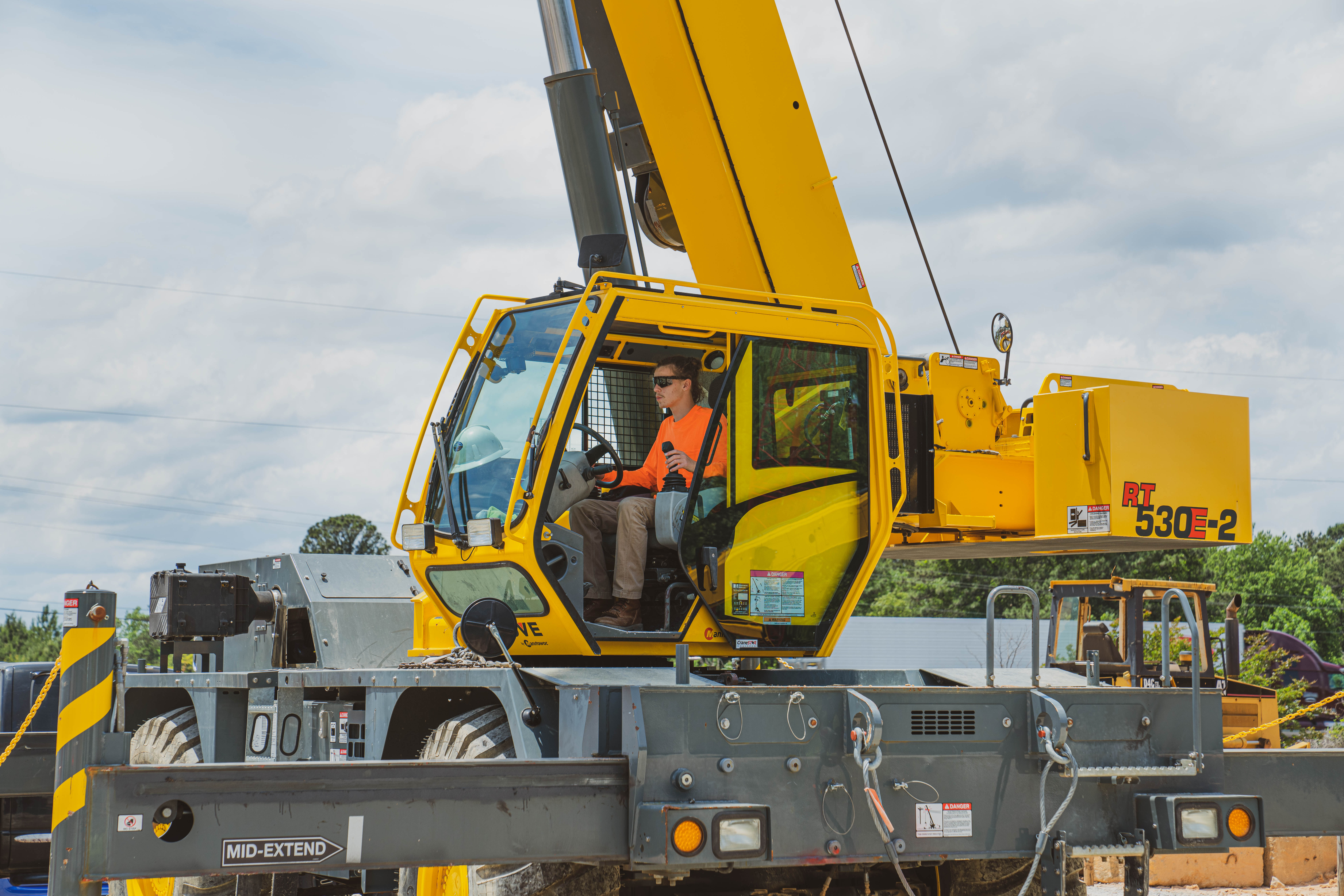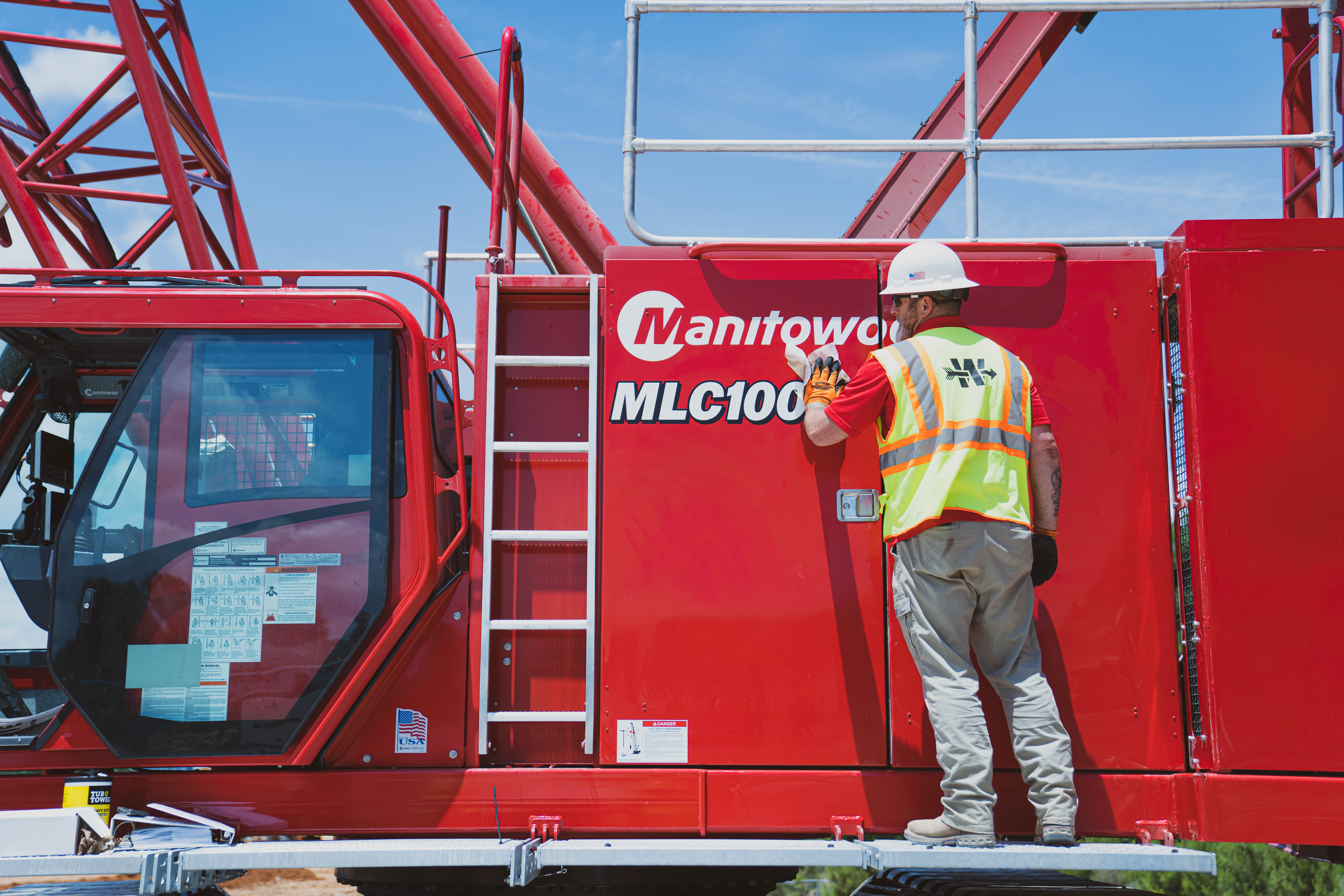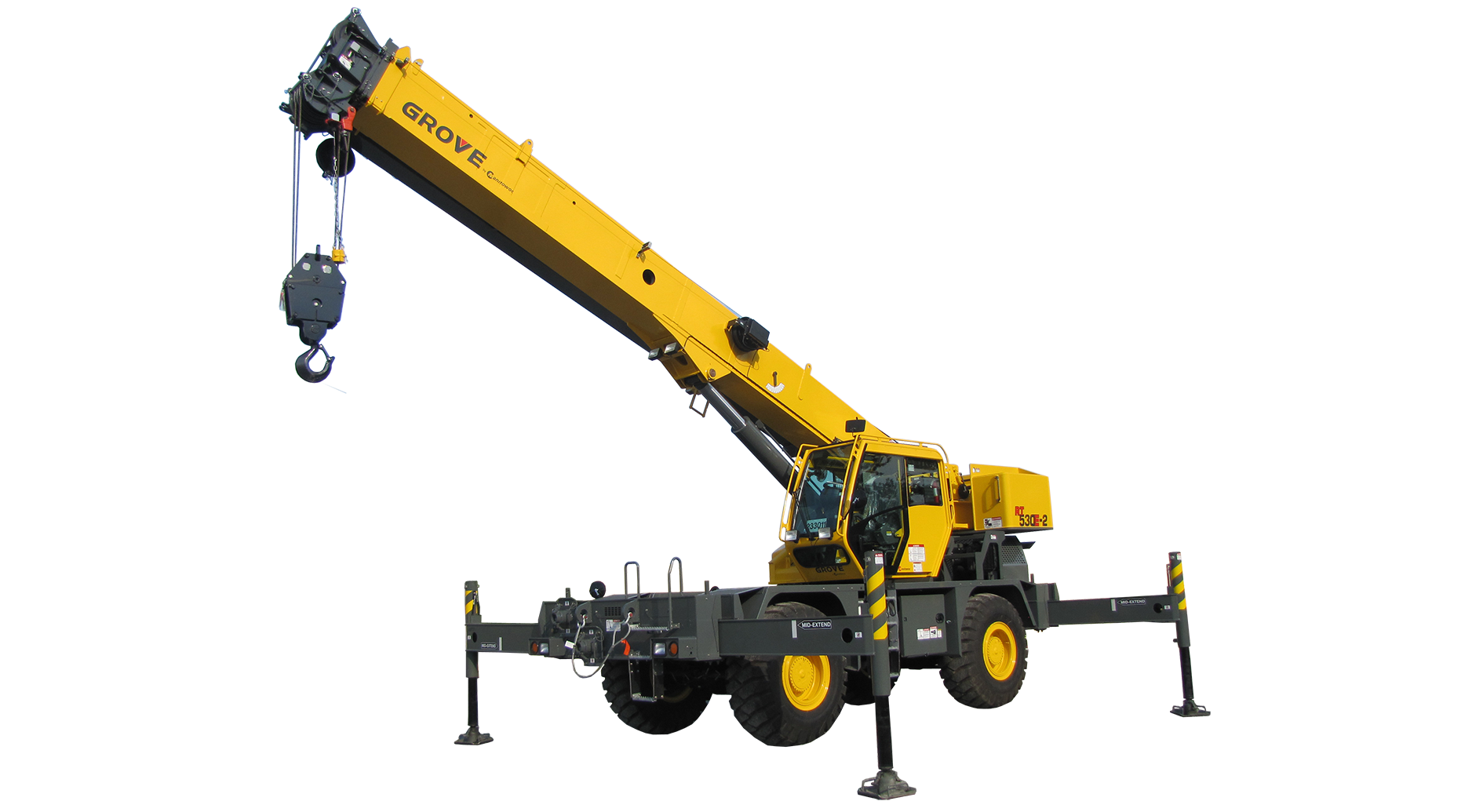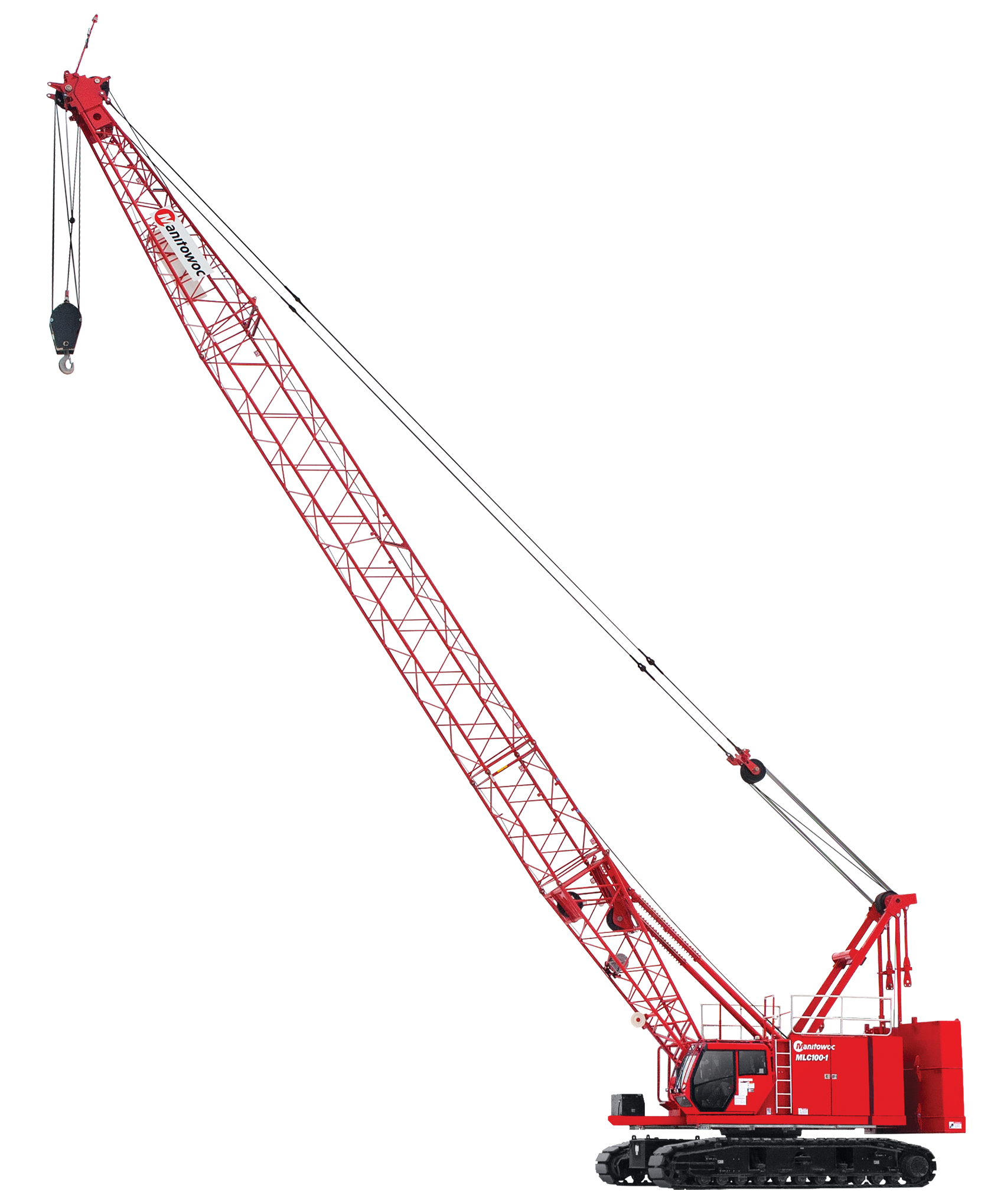
Upwardly mobile: becoming a crane operator has never been such a rewarding career option
- Latest U.S. figures on crane operator salaries show a national annual wage of $64,000, while the top 10% can earn over $117,000/year. The most lucrative states to work in are evenly distributed across the country and employment opportunities are increasing rapidly.
- 79% of the students enrolled in operating courses at Heavy Equipment Colleges of America are of the millennial generation or younger, bringing a host of transferrable skills with them as they build a new career in crane operation.
- In 2021 HEC took delivery of two new Manitowoc MLC100-1 crawler cranes to join its fleet of approximately 15 Manitowoc and Grove cranes, all used in hands-on training at the school.
Whether it’s because of high wages, increased opportunities or the ability to handle loads easier than ever before, there may never have been a better time to be — or become — a crane operator. Back in 2014, the Bureau of Labor Statistics predicted an 8% rise in vacancies for this occupation over the following 10 years — well above the average increase for other highly skilled jobs. As of May 2020, it estimated that over 44,000 positions nationwide were either filled or available, paying on average $30.77 per hour. And with the best states to be an operator being evenly distributed across the U.S., you’re also never too far from an opportunity to maximize your earnings. Nationwide averages for crane operators top $64,000 per year, with New Jersey operators earning up to $117,000 annually.
Booming prospects
The millennial generation may have a reputation for shying away from “dirty and dangerous” blue-collar jobs, but that hasn’t applied to crane operation for decades. In fact, with their reliance on electrohydraulic joysticks and computer screens with game-quality graphic displays, today’s spacious, Bluetooth- and AC-equipped crane cockpits feel like a home away from home. And, with this age group’s knack for gaming and technology, seemingly possessing superior, innate hand-eye coordination and instinctively understanding advanced crane control systems, there are few demographics more able to be nurtured by industry training programs.
Heavy Equipment Colleges of America (HEC) is keen to encourage as many newcomers as possible to avail themselves of these rewarding opportunities. In particular, there is a key demographic that is benefitting most — an impressive 79% of HEC’s current students are millennials or younger.
But another group bringing a range of relevant real-world skills to the table are the former military. Take nine-year Army veteran Brian Green, for whom choosing a career path after leaving the military involved a decision between leveraging his degree in Fine Arts or acquiring a new vocational skill.
Now, as a graduate of the lattice boom crawler crane course at HEC, Green said he believes that his previous experience as a heavy equipment operator and tank commander has given him both the passion and easily transferrable skills needed for operating HEC’s array of machinery.
“Crane operating seemed more competitive in terms of both salary and lifestyle, offering an essential career in today’s job market,” he said. “In the Army, you were kind of expected to be independent and know what you were doing. Crane operating is very similar. There could be 300-400 workers on a jobsite all relying on you to operate that crane safely and get the job done so everyone can go home at the end of a workday.”
As a fellow graduate of the lattice boom class, 36-year-old Army veteran Misty Mathis, echoes Green’s view — but while she didn’t initially share Green’s optimism, she now feels ready to take on any job opportunity very soon.
“I was a bit nervous operating a crane for the first time but with proper instruction I became a lot more confident,” Mathis said. “I’ve also learned to operate a fixed cab crane and a hydraulic crane — that’s three very different sizes of equipment — and my handling is so much cleaner now.”
Smart controls, comfortable cabs
While operating Manitowoc’s Crane Control System (CCS) can be reminiscent of playing video games, Green points out that the similarity extends far beyond the interaction with the crane via joysticks and buttons.
“Whether you’re gaming or in actual combat, you need to have focus and tactical patience; you can’t afford to make mistakes,” he said. “You have to make sure that you’re aiming properly, making the right decisions, and that’s exactly like operating a crane.”
Nevertheless, his first time operating a crane wasn’t quite the walk in the park he had anticipated.
“Honestly, coming from heavy equipment operation and understanding what those machines could do, I thought I was immediately going to be a pro! But it was a big transition — you operate a tank in a very aggressive manner, while with a crane it’s completely the opposite. You need to have a cooperative relationship with it.”
Green said cranes these days will do the hard work for operators and help them conduct safe and efficient lifts.
“It’s amazing just how much the machine will help you out,” he said. “The CCS helps you understand the ratio you’re operating in, work out the height and capacity, and does a lot of the mathematical equations for you, allowing you to focus on just moving the load safely. And the cab is really comfortable too!”
“I’d always admired cranes and knew that’s what I wanted to do. Some people sit and wonder, ‘Could I really do this?’ but if you don’t step forward, you’ll only be holding yourself back,” said Mike Lacroix, an HEC graduate who returned to instruct future operators, utilizing the school’s fleet of 17 Manitowoc cranes.
Crane operator training is a comprehensive mix of classroom- and field-based, hands-on, learning. Students learn about load charts, set-up, performing daily PMCSs (Preventive Maintenance Checks and Services) and the different systems on the crane as part of the indoor modules, before going outside to perform daily inspections, practice set-up, learn how to operate the LMI (Load Moment Indicator). For NCCCO (National Commission for the Certification of Crane Operators) certification, this includes timed events such as a chain run, barrel run, and corridor runs, having enjoyed one-to-one instruction beforehand. HEC’s training course also preps students for crane operator licensing, an OSHA requirement in all U.S. states as of November 2018.
“The career outlets for crane operators are very exciting,” Lacroix continued. “There’s the taxi fleet side, with companies that operate in different states; or contract services, where students can link up with different employers, and travel around the U.S. I operated a lot of different cranes, with different controls, and learned a lot of different techniques. It felt like a huge accomplishment to help build something from the ground up and making the future better.”
Future crane operators can opt for a variety of niche job options, and since demand is high, count on a worthwhile career, financially speaking.
“There really is a crane operation job to suit everyone. If you don’t like heights, there are plenty of cranes you can operate at ground level. If you don’t want to drive long distances, you can operate an RT crane, or if you don’t want to work construction, you could always try out at the docks,” concluded Michael Herbert, vice president of aftermarket services at Manitowoc. “But whatever you choose, it will inevitably be both a financially and personally rewarding occupation.”
CONTACT
Amy Crouse
Manitowoc
T +1 717 593 5960
amy.crouse@manitowoc.com
Wanted: Crane Operators
NATIONAL CRANE
National Crane boom trucks set the global standard for truck-mounted hydraulic cranes. With crane models that offer exceptional reach, many feature the longest boom and strongest load chart in their capacity class. Set up on the job site is flexible and efficient with National Crane’s innovative outrigger systems and compact, fully roadable chassis. Unique technologies that aid in both operation and comfort make National Crane the favorite boom truck brand of operators around the world.
GROVE
Grove is the world leader in mobile cranes. For nearly a century, Grove has delivered best-in-class performance and groundbreaking technology through its range of rough-terrain, all-terrain, truck-mounted, military, industrial and telescoping crawler cranes.
SHUTTLELIFT
Shuttlelift industrial cranes harness power and flexibility rarely seen in such a compact package. They are extremely maneuverable, making them ideal for both indoor and outdoor projects, and their spacious load decks provide optimal space for material handling. Multi-mode steering and excellent pick-and-carry capabilities make Shuttlelift cranes the first choice in compact industrial cranes for plant maintenance and material handling jobs around the globe.
MANITOWOC
Manitowoc is the world’s most celebrated maker of crawler cranes. Its cranes have remained at the top of the lifting world for a century, and Manitowoc continues to deliver technological breakthroughs that enhance load charts, increase efficiency, improve transport, simplify erections and earn owners exceptional return on their investments. With so much innovation at its core, it’s no wonder the very name “Manitowoc” is synonymous with crawler cranes.
POTAIN
Self-Erecting Cranes
Fast, agile and easy to operate, the self-erecting cranes are especially suited for small constructions sites. The Potain self-erecting cranes ranges are the most innovative to make transport, accessibility, erection, dismantling and servicing the most efficient ever for the user. With the widest range on the market, the Potain self-erecting cranes include the Evy, Hup, Hup M, Igo, Igo M and Igo T ranges.
Top-Slewing Cranes
Top-Slewing cranes are the large construction sites most strategic equipment for productivity. Whether on large infrastructure, high rise jobsites, crowded urban areas or wide open sites, they make it possible to hoist and distribute loads high and far. The Potain brand is a global leader with its multiple ranges of topless cranes, luffing jib cranes and large hammerhead cranes that can also be customized to match special applications.
Top-Slewing Cranes Asia
Potain, the world leader of the tower crane now sells a range of models perfectly adapted to each type of construction. These products are based on the latest technologies and are associated with a complete set of equipment.
Top-Slewing Cranes China
Potain, the world leader of the tower crane now sells a range of models perfectly adapted to each type of construction. These products are based on the latest technologies and are associated with a complete set of equipment.
Rough-Terrain Cranes
Grove rough terrain cranes are designed to handle the toughest jobsite conditions with lift capacities ranging from 30 t to 150 t (30 USt to 165 USt). Performance, productivity and operator comfort features allow your operators to work effectively for longer days with less fatigue. Quality, reliability and easy maintenance are built into every Grove rough terrain crane, making them the right choice for your business.
Truck-Mounted Cranes
Quick set-up is a feature of Grove TMs along with long reach, high capacity booms and highway speed travel capabilities. A front outrigger is standard for 360° operation. Grove truck cranes are popular choices because of their extensive list of standard features.
Carrydeck Cranes
Compact industrial cranes are used for plant maintenance and material handling jobs. Simple to operate, these units feature carry decks and multi-mode steering allowing operation in tight quarters. These machines offer compact dimensions, good maneuverability and excellent pick and carry capacities.
Stand-Up Boom Trucks
National Crane offers 8 models of stand-up control telescoping cranes with capacities ranging from 9,1 t (10 USt) to 29,9 t (33 USt) and maximum vertical reach ranges from 17 m (56 ft) to 50,9 m (167 ft).
Swing Seat Boom Trucks
Swing seat cranes feature the comfort and convenience of an enclosed operator’s cab. National Crane offers 14 models ranging from 27,2 t (30 USt) to 54,49 t (60 USt). Maximum vertical reach ranges from 49,7 m (161 ft) to 62,8 m (206 ft).
All-Terrain Cranes
Grove all-terrain cranes are manufactured to the highest quality in the Wilhelmshaven factory, Germany. This facility, specializing in lean manufacturing techniques and complying with ISO9001 quality standards, is constantly developing processes to optimize reliability and durability through continuous improvement.
Lattice-boom Crawler cranes
Manitowoc Cranes has been manufacturing a comprehensive range of products to support your lattice-boom crane lifting needs since 1925. The crawler portfolio showcases innovation and velocity in all models to build opportunity on every jobsite.
Shuttlelift Carrydeck Cranes
Carrydeck cranes are designed for both indoor and outdoor jobsites and feature telescoping booms and a load deck for material handling.
Telescoping Crawler Cranes
The GHC Series telescoping crawler cranes are redefining industry standards. The GHC Series combines excellent gradeability and lift capacity with 100 percent pick and carry capability. It all comes in a package that’s engineered for exceptional operator ergonomics and maneuverability, thanks to its rugged, heavy-duty crawler tracks and telescoping boom.






